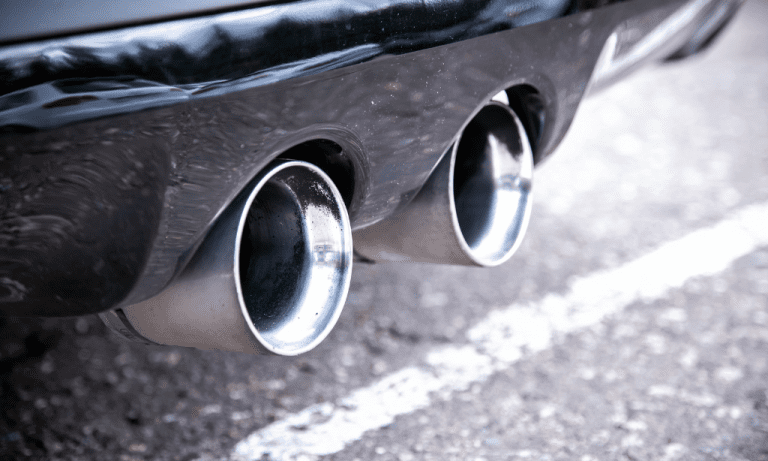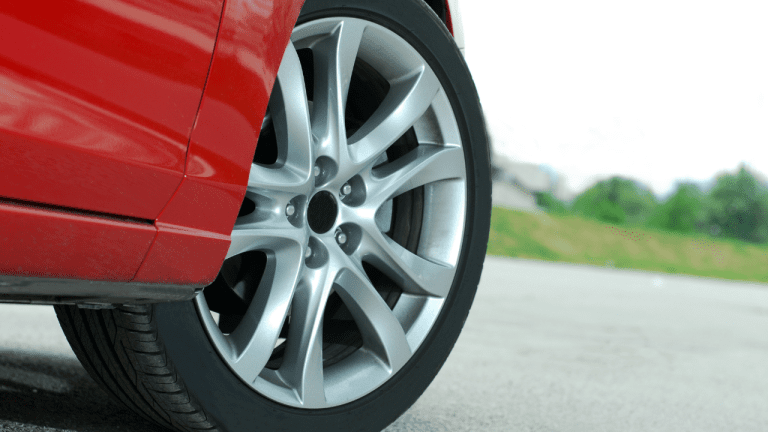Can You Bondo Aluminum? The Ultimate Guide
Yes, bondo can be used to repair aluminum surfaces effectively. Bonding aluminum surfaces can be challenging, but it is possible with the right products.
One popular and effective way to bond aluminum is by using bondo, a trusted brand for automotive repairs. Whether you need to repair dents, holes, or scratches in an aluminum panel, bondo can provide a reliable solution. By following the proper preparation and application process, you can achieve a strong bond that restores the integrity and appearance of your aluminum surface.
In this article, we will explore the steps involved in using bondo to repair aluminum and provide some useful tips to ensure a successful outcome. So, if you’re wondering whether bondo can be used on aluminum, the answer is yes, and we’ll show you how.
Understanding Aluminum Bondo
Aluminum bondo is a versatile and widely used product in the world of auto body repair. Whether you’re working on a dent, scratch, or crack in aluminum, aluminum bondo can be a handy solution to restore the look and functionality of your vehicle.
In this section, we’ll explore the ins and outs of aluminum bondo, its benefits, as well as its limitations and considerations. So, let’s dive in and understand aluminum bondo in detail.
What Is Aluminum Bondo?
Aluminum bondo, also known as aluminum body filler, is a type of filler specifically designed for repairing and restoring damaged aluminum surfaces. It is a two-part product that consists of a putty-like substance and a hardener. When these two components are mixed together, a chemical reaction occurs, causing the mixture to harden and provide a solid and durable repair.
Benefits Of Using Aluminum Bondo
- Versatile application: Aluminum bondo can be used on various aluminum surfaces, including car panels, boats, motorhomes, and more.
- Quick and easy repair: With its fast-drying properties, aluminum bondo allows for efficient repairs, reducing downtime and getting your vehicle back on the road in no time.
- Excellent adhesion: This product adheres well to aluminum surfaces, creating a seamless and durable bond that can withstand the rigors of everyday use.
- Smooth finish: Aluminum bondo can be easily sanded and shaped, allowing for a smooth and professional-looking finish.
Limitations And Considerations
- Temperature sensitivity: It is important to note that aluminum bondo may not perform optimally in extreme temperature conditions. Therefore, it’s crucial to follow the manufacturer’s guidelines and recommendations.
- Preparation is key: Proper surface preparation is essential for a successful repair. Ensure that the aluminum surface is clean, free from rust, and properly sanded before applying aluminum bondo.
- Thickness limitations: While aluminum bondo is an effective solution for shallow dents and scratches, it may not be suitable for deep and extensive damages. In such cases, professional assistance may be required.
As with any product, it’s crucial to read and follow the instructions provided by the manufacturer for the best results. Aluminum bondo can be a valuable asset in your diy auto body repair toolkit, providing a reliable and cost-effective solution for aluminum repairs.
Preparing For Aluminum Bondo
Bondo, a popular brand known for its automotive repair products, offers a solution for repairing aluminum surfaces. If you’re wondering whether you can use bondo on aluminum, the answer is yes! However, before you dive into the process, it’s crucial to prepare yourself with the necessary tools and materials.
Additionally, it’s important to prioritize safety precautions to ensure a successful and risk-free aluminum bondo application.
Tools And Materials Required
- Bondo aluminum patch or bondo all-purpose putty
- Clean cloth or rag
- Sandpaper (grit ranging from 80 to 220)
- Sanding block or sanding board
- Putty knife or spreader
- Acetone or metal cleaner
- Protective gloves
- Safety goggles
To achieve a smooth and seamless aluminum bondo repair, gathering the correct tools and materials is essential. Let’s take a closer look at each item’s purpose in the process.
Safety Precautions To Follow
- Before you begin any repair work, ensure you are wearing protective gloves and safety goggles to shield yourself from any potential accidents or harm.
- Work in a properly ventilated area or use a mask to avoid inhaling any potentially harmful fumes.
- Take caution when handling sharp tools such as sandpaper or putty knives to prevent any injuries.
- If using acetone or metal cleaner, ensure proper handling and avoid contact with your skin and eyes, as these substances can be irritants.
- Follow the manufacturer’s instructions on the bondo product you choose, as they may contain specific safety guidelines and precautions.
By adhering to the above safety precautions, you can safeguard yourself and create a secure environment while working on your aluminum bondo repair.
Before diving into the process of applying bondo to aluminum, it’s crucial to be equipped with the necessary tools and materials. Additionally, prioritizing safety precautions will ensure a smooth and risk-free repair job. So gather your supplies, take safety measures, and let’s get started on your aluminum bondo project!
Steps For Bondoing Aluminum
Aluminum is a popular material used in various industries due to its lightweight and corrosion-resistant properties. However, even the toughest aluminum surfaces can sometimes get damaged or develop imperfections. If you find yourself in such a situation, you might be wondering if it’s possible to bondo aluminum.
The good news is that, with the right tools and techniques, you can successfully bondo aluminum and restore its original appearance. In this blog post, we will guide you through the steps of bondoing aluminum, ensuring a seamless repair job.
Step 1: Surface Preparation
Before you begin the bondoing process, it’s crucial to properly prepare the aluminum surface. Here’s what you need to do:
- Cleaning the aluminum surface: Make sure the surface is free from any dirt, grease, or debris. Use a suitable cleaner and wipe it clean.
- Sanding the surface: To create a rough surface for better adhesion, gently sand the damaged area using sandpaper or a sanding block. Aim for a smooth and even finish.
- Applying an etching primer (optional): If you’re working with bare aluminum, applying an etching primer can further enhance the bondo’s adhesion. This step is optional but recommended for optimal results.
Step 2: Mixing Bondo
Now that the aluminum surface is prepped, it’s time to mix the bondo. Here’s what you need to know:
- Choosing the right bondo product: Select a bondo product specifically designed for aluminum repairs. Ensure it’s compatible with aluminum surfaces to achieve the best outcome.
- Preparing the bondo mixture: Follow the manufacturer’s instructions to mix the bondo filler and hardener. Make sure to achieve a smooth and consistent mixture for easy application.
Step 3: Applying Bondo To Aluminum
With the bondo mixture ready, it’s time to apply it to the aluminum surface. Here’s what you should do:
- Applying the first layer: Using a putty knife or a plastic spreader, evenly spread a thin layer of bondo over the damaged area. Be careful not to apply too much at once to avoid excessive buildup.
- Shaping and smoothing the bondo: Once the first layer is applied, use the edge of the putty knife or a shaping tool to shape and smooth the bondo. This step helps achieve a seamless blend with the surrounding surface.
- Applying additional layers (if required): Depending on the extent of the damage, you may need to apply additional layers of bondo. Repeat the previous steps for each layer, ensuring proper curing before proceeding.
Step 4: Sanding And Finishing
After the bondo has fully cured, it’s time to sand and finish the repaired area. Here’s what you need to do:
- Sanding the bondoed area: Gently sand the bondoed area using progressively finer grit sandpaper until it’s smooth and flush with the surrounding surface.
- Priming and painting the repaired area: Apply a suitable primer and paint to match the original finish of the aluminum surface. This step ensures a professional and seamless repair job.
Following these steps will help you bondo aluminum with ease and precision. It’s important to remember that practice and patience are key to achieving optimal results. So get ready to restore your aluminum surfaces like a pro!
Tips And Tricks For Bondoing Aluminum
Aluminum is a versatile material used in various industries, from automotive to aerospace. When it comes to repairing damaged aluminum surfaces, bondo can be a handy solution. Bondo is known for its ability to fill in gaps, holes, and imperfections, restoring the integrity of the material.
However, working with aluminum and bondo requires some know-how to achieve the best results. In this section, we will dive into some useful tips and tricks for bondoing aluminum.
Understanding The Drying Time
In the world of bondoing aluminum, drying time plays a crucial role. Here are the key points to consider:
- Bondo has a specific drying time that is influenced by various factors such as temperature, humidity, and quantity applied.
- Always check the instructions provided by the manufacturer for the recommended drying time.
- A general rule of thumb is to allow bondo to dry completely before proceeding with any sanding or further application.
- If you rush the drying process, it can lead to crumbling and an uneven finish.
- Patience is key when working with bondo on aluminum. Give it the proper time it needs to set and dry for a smooth and successful outcome.
Dealing With Imperfections
Working with aluminum can be challenging due to its smooth and non-porous surface. Here are some tips to tackle imperfections effectively:
- Before applying bondo, make sure to clean the aluminum surface thoroughly. Any dirt or grease can compromise the bond.
- Use a sandpaper with a fine grit to create a slightly rough texture on the aluminum. This helps the bondo adhere better.
- Apply a thin layer of bondo and smooth it out with a putty knife, ensuring there are no bubbles or uneven spots.
- After the bondo has dried, use sandpaper to gently sand down any high spots or rough edges.
- For deep or larger imperfections, multiple layers of bondo may be required. Allow each layer to dry and sand in between for a seamless finish.
Proper Use Of Tools And Equipment
Having the right tools and equipment can make a significant difference in your bondoing process. Here are some key points to remember:
- Invest in high-quality bondo and ensure it is specifically formulated for use on aluminum.
- Use a clean and smooth mixing surface to prepare the bondo. A disposable mixing tray or piece of cardboard works well.
- To achieve a proper mix, follow the manufacturer’s instructions for the ideal ratio of hardener to bondo.
- Use a plastic spreader or putty knife to apply and shape the bondo.
- It’s essential to work in a well-ventilated area and wear proper safety gear, including gloves and a mask, to protect yourself from harmful fumes.
By understanding the drying time, dealing with imperfections, and using the right tools and equipment, you can successfully bondo aluminum surfaces. These tips and tricks will help you achieve professional-looking results and restore damaged aluminum with confidence.
Frequently Asked Questions
Can Bondo Be Used On Aluminum?
Yes, bondo can be used on aluminum surfaces. However, it is important to properly prepare the aluminum before applying the bondo. This includes cleaning, sanding, and using a metal etching primer to ensure the bondo adheres properly. Additionally, it is recommended to apply multiple thin layers of bondo rather than a thick layer for better results.
Is Bondo A Good Choice For Repairing Aluminum?
Bondo can be a good choice for repairing minor damages on aluminum surfaces. It is easy to work with, affordable, and can provide a durable repair if applied correctly. However, for major damages or structural repairs on aluminum, it is advisable to consult a professional or consider other repair methods such as welding.
Can Bondo Be Used For Repairing Dents On Aluminum?
Yes, bondo can be used to repair small to moderate dents on aluminum surfaces. The key is to properly prepare the surface, apply bondo in multiple thin layers, and then sand it down to achieve a smooth finish. However, for larger or more complex dents, professional assistance may be necessary for the best results.
What Are The Alternatives To Bondo For Aluminum Repair?
If you prefer an alternative to bondo, there are other suitable options for repairing aluminum. Epoxy-based fillers such as jb weld or aluminum-filled epoxy putty can be effective alternatives. These products bond well with aluminum and have excellent adhesion properties.
Can Bondo Be Used To Repair Corrosion On Aluminum?
Bondo can be used to repair corrosion on aluminum surfaces to some extent. However, it is important to note that the underlying cause of the corrosion should be addressed before applying bondo. The corroded area should be cleaned, treated with a suitable primer, and then bondo can be applied to level the surface and provide a repair.
Conclusion
Bonding aluminum can be a challenging task, but with the right techniques and products, it is indeed possible. By following the correct procedures, such as cleaning and preparing the surface, selecting the appropriate adhesive, and applying it correctly, you can achieve a strong and durable bond.
Whether you’re repairing an aluminum structure, creating unique metal artwork, or working on any aluminum project, the use of bondo can be a suitable option. Bondo provides a reliable and effective solution for bonding aluminum surfaces, thanks to its strong adhesion properties.
With its versatility and ability to withstand various environmental conditions, bondo can be a valuable tool in your aluminum bonding endeavors. Remember to always read and follow the manufacturer’s instructions for best results. So go ahead, try bonding aluminum with bondo, and enjoy the benefits of a strong and lasting bond.
- Weathertech Truck Bed Cover: A Comprehensive Guide - June 18, 2025
- Truxport Truck Bed Cover: A Comprehensive Guide - June 18, 2025
- Truck Bed Rack And Tonneau Cover Compatibility - June 18, 2025





